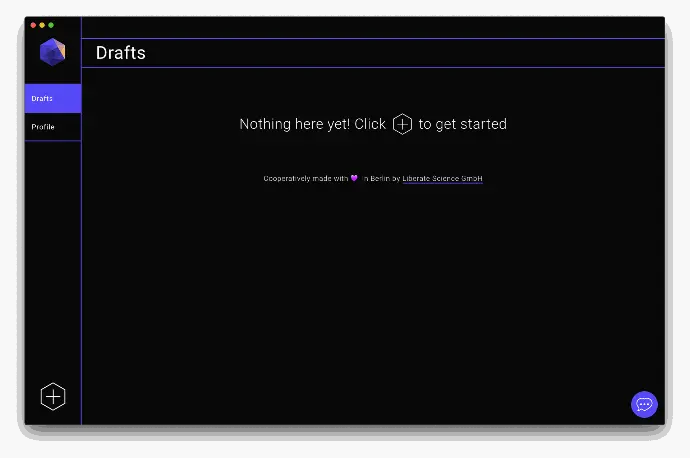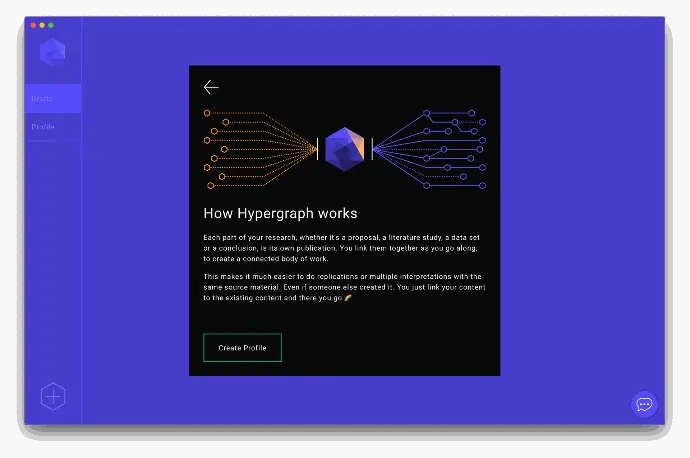We recently wrapped up a workcycle for Hypergraph, codenamed "Cheesecake" and we'd like to share our progress 😊
We use workcycles to collectively prioritise our work, assign tasks, and self-organise until the next workcycle. This allows us to jointly set the roadmap, calibrate to the vision, and review hiccups in the process on a regular basis.

With Hypergraph we are resetting research publishing from after-the-fact articles to as-you-go modules of research. The first complete version is planned for September and with it you can create and discover these research modules in near realtime.
During this workcycle, we focused on refinement of our ecosystem. For the researcher, what's noticeable is:
- Introduced new visuals on launch to accompany the introductory text
- Integrated dynamic avatars, which will generate your avatar based on your first and last initial (in the future you can add your own images)
- Added chat integration for direct support anywhere in Hypergraph through Chatra (support available 9AM-6PM on workdays; you can also try it out on this webpage 😊)
We also regularly run tests with researchers to see what's valuable, what's unintuitive, and what we could improve.
We ran four tests this cycle and consistently got the feedback that the visual style is clean and easy to use. Questions arose around whether as-you-go modules force a linear progression of research. This is not the case and the feedback indicates we need to work on conveying that.
Other updates relate to the peer-to-peer commons (p2pcommons), the open infrastructure behind Hypergraph. The p2pcommons is a set of standards to provide a flexible framework for various kinds of research modules (data, code, text, video).
All research modules will be available under a CC0 Public Domain Dedication by default. With this as part of the standard, researchers can rest assured that they can reuse any building block they encounter through Hypergraph. It also ensures researchers do not give up patent rights.
We also integrated WikiData to indicate what type of research content is in a module. WikiData is a living database, allowing Hypergraph content to evolve with new ways of doing research, while also making sure all content is unambiguously identifiable (e.g., theory as Q17737).
The
next workcycle is codenamed "Doughnut" 🍩 and will be the first version
of Hypergraph to connect with other people's content. This was the
first of a continuous series of posts where we share updates on our
work. If you want to be updated every other week on what's going on in
the Liberate Science ecosystem, you could sign up for our newsletter.



